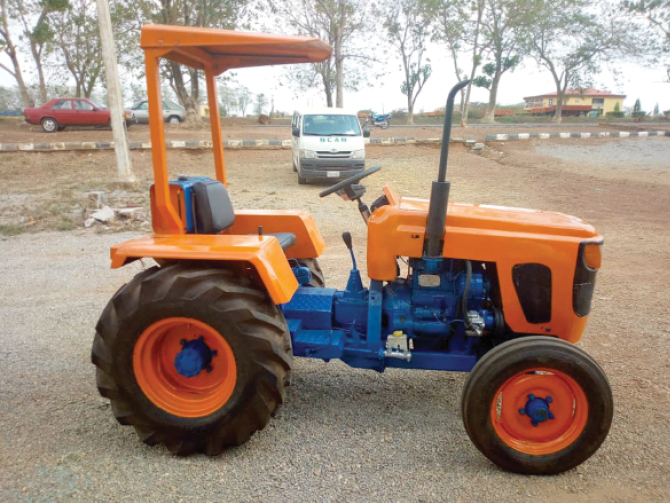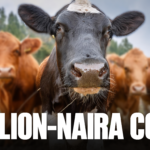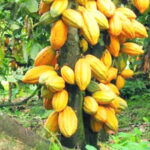The mini tractor made by the Nigerian National Centre for Agricultural Research (NCAM) is a 40-horsepower machine developed in response to the problem farmers were having with the big imported ones. With the capacity to finish two hectares of farmland in a day, it has become a game changer for many farmers in the country.
Made in Nigeria, the technology is said to be the first in Africa and has provided farmers with the opportunity to improve yield through effective utilisation. Most of the imported tractors were brought into the country without their spare parts, a situation that explains the huge number of imported tractors that have now turned to scraps across the country and posing a serious challenge to farmers.
Leventis Foundation teaches youth to see opportunities in agribiz
AGRO SOLUTIONS: Value of water to broiler breeders as a nutrient
Cost
The mini tractor comes with all arrays of implements like plough, harrow and trailer and may be worth N7.5 million, unlike the imported ones.
The executive director the NCAM, Yomi Muyideen Kasali, an engineer, explained thus: “This is, however, not equivalent to an imported one, which is about N12 million and without these accessories. These three things I have mentioned cost around N6m, aside other ones that are still needed to be added to it. At the end of the day, the minimum amount spent on the imported tractor is about N18m,” he said.
Ways farmers can own the tractor
Because of the economic situation, farmers don’t find it easy to say they want to own a tractor. The majority of them are resource-poor and the attitude of the state government to support the institute on the provision of the mini tractor and other machinery manufactured by the NCAM to get to the farmers is not encouraging. Therefore, the executive director advised the farmers to go into cooperative associations and make the ownership a money-making venture.
Production/acquisition
For now, the Ministry of Agriculture subsidised the mini tractor for the farmers and only produced on demand for big-time farmers, who are even requested to pay in instalments.
“The problem we have now is that the farmers are resource-poor, and that is why we encourage cooperative for them to pool resources together because they can’t buy it individually. By doing this, they can also lease it out to make a profit, which will be shared among them. I have a situation now where some farmers acquired a crop thresher through this method and paid back in few months. They shared the risk and hire it out to get their money.
“The issue is that the state where the farmers reside is not doing much for them. The Federal Ministry of Agriculture subsides agricultural equipment, unlike the states, but how many can they do? When we go to states to showcase our technology through exhibition, the governors attend, same with farmers across all the local governments, but the governors will not pay the counterpart funding to bring these farmers, they still puts it at the shoulders of the federal government. The state still has a lot to do to assist the farmers in this regards,” he added.
Benefits/impact
Areas where the mini tractor has come handy are drudgery, yield and proper management of the farmland. Mr Kasali said most of the farmers didn’t own more than two hectares of farmland maximum, and so, need something smaller than the normal tractor.
“What we need is between 40 and 75 horsepower tractor, not big ones. This will reduce traction that can lead to compaction of the soil because of its fragility. Big tractors are not cost effective, and what a 75 horsepower can do can also be done by the big tractor. That is why you see that it is the most commonly used tractors in Nigeria. Now, with small holdings everywhere, we need to start with small tractors to manage a small area for effective productivity, just as it is being done in advanced countries like Japan and other places. It is not necessary that you look for big tractors, especially in places like the North, which has animal traction and impacted loamy soil,” he noted.
Accessibly
Access to the product is not difficult, but the only issue is that they are produced on request, based on specification.
Maintenance
The mini tractor is relatively easy to maintain and a marked departure from the imported one, which has the problem of spare parts. According to the NCAM boss, “The cost of maintenance is not on the high side because most of the parts are indigenous. And once we sell out, we back-store and look at any problem that may arise afterwards and solve it. So, they are easy to maintain. Most of the parts of the imported ones are not available.”
Durability
He said the durability “depends majorly on maintenance to make it last. It can stay 5 to 10 years in good condition provided there are maintained.”
On the cost of maintenance, he said, “Now, engine oil costs between N7,500 and N13,000. And two gallons, minimum, are needed to service the mini tractor. There might be the need to also change some parts, which also increase the cost.”
Why imported engine?
“We don’t have the required metal industry to do that, and that is where the Ajaokuta Steel Company comes in. That would have been the only place for us to be able to smelt and mould engines. Even grinding machine engines now are imported, and we hope to see the Ajaokuta come on stream to revive our moribund steel industry,” he said. .

 Join Daily Trust WhatsApp Community For Quick Access To News and Happenings Around You.
Join Daily Trust WhatsApp Community For Quick Access To News and Happenings Around You.


